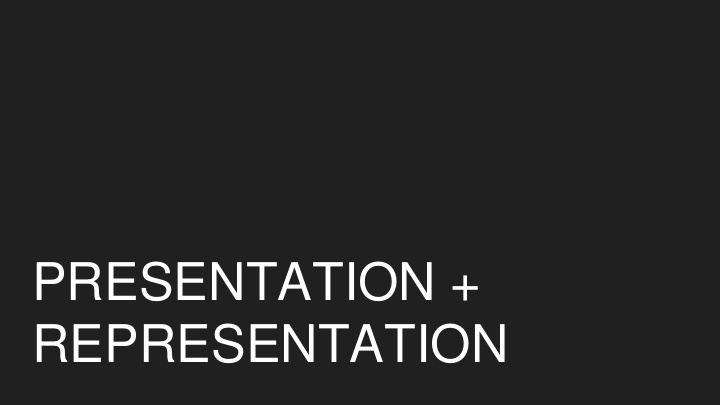



PRESENTATION + REPRESENTATION
● Narrative (Telling a Story) ● Composition ● Color Palette ● Font Choices ● Balancing Text and Graphics
Telling a Story... 1. Use narrative to describe your project with pictures and in writing. 2. People are a useful tool for describing what is happening. 3. Avoid stating the obvious. Look for opportunities to get the most mileage out of your work.
PERSPECTIVE VIEW: AVOID STATING THE OBVIOUS
“Students meet and work in the cafe, while others relax in the lounge.”
“Modular lighting in the flexible use space helps to set up for performances, gallery style exhibits, or digital media presentations.”
(Your turn…) (Clue: This building is a Theater)
Composition... (The artistic arrangement of parts, in consideration of the whole.) 1. Consider the use of a grid to layout your presentation. 2. Try to keep the presentation visually balanced so your eye doesn’t shoot around the page - it should flow smoothly through your presentation. 3. Use a hierarchy of image and text sizes to talk about ideas that are big and small. - Typically, move from big ideas (General) to small ideas (Specific).
12 Can be divided into: 1 / 1 1 / 2 1 / 3 18 1 / 4 1 / 6 1 / 12 Or any combination thereof.
1/4 1/4 1/4 1/4 3/4 3/4 1/4 1/4 1/4
Color Palette... 1. Use color theory when deciding on color palette 2. Use contrast and accent colors to make important things stand out 3. 60-30-10 Rule
Color Palette Themes. (Start with one or two colors, use color theory, or online tools to help find accents.)
10% | ACCENT 30% 15%|15% 60% | PRIMARY SECONDARY
Font/Typeface Choice. 1. The font you choose says a lot about your project… 2. Changing the font will impact how someone reads the boards. 3. A good rule of thumb is to use 3 fonts. a. FOR THE HEADER b. For the body/text c. “for the captions”
Big Al’s - Riding Club.
Balancing Text and Graphics 1. Both images and text should speak about the project. 2. Big images and big text pull people in from a distance. (Draws you in) 3. Small images and small text are meant to be read close up. (Holds you there) 4. Your board should be able to present itself when you are not present.
I HAVE I HAVE TO BE TO BE VERY CLOSE VERY CLOSE I CAN SEE THIS ALL THE WAY ACROSS I CAN SEE THIS THE ROOM FROM A FEW FEET I HAVE TO BE VERY CLOSE
THEY COVERED UP ⅓ OF THE PICTURE WITH TEXT!!! ALL ALL THE THE PICTURES TEXT (TLDR)
Award Winning Presentation Boards…
???
Examples of how to quickly turn process into presentation!
Recommend
More recommend